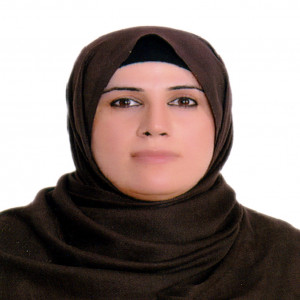Published Journal Articles
2023
INTERNAL STEM ANATOMY OF SIX BROMUS SPECIES GROWN IN DUHOK PROVINCE, KURDISTAN REGION. IRAQ
2023-07
Science Journal of University of Zakho (Issue : 3) (Volume : 11)
The stems of six species of Bromus (B. scoparius L., B. lanceolatus Roth., B. sterilis L., B. madritensis L., B. squarrosus L. and B. danthoniae Trin.) which belongs to Poaceae family grown in Duhok province, Kurdistan region, Iraq were examined anatomically. The samples of Bromus species have been collected from Duhok city in spring 2022. The research was carried out at Biology department, Faculty of science, University of Zakho. The study aims to distinguish between the anatomical differences among the Bromus species since they share phenotypic traits that make it difficult to distinguish them apart. The samples were fixed in formalin- acetic-acid alcohol (FAA) and cross sections were prepared, examined using compound light microscope and photographed at different power. The highest number and measures of the vascular bundles, thicknesses of cuticle, epidermis, hypodermis, and the diameters of the minor and major vascular bundles (stele) were recorded in the B. danthoniae. while, the highest dimeters of metaxylem and cross section of stem were appeared in B. scoparius and B. sterilis, respectively. On the other hand, the lowest number and measures of the above-mentioned features were fluctuated among the Bromus sterilis, B. lanceolatus, B. madritensis. The cross sections indicated that there were valuable differences in both qualitative and quantitative values of the anatomical features among the species.
2021
IMPACT OF REGIONAL DISTRIBUTION AND AIR POLLUTION ON INTERNAL STRUCTURE OF MELIA AZEDARACH L. LEAVES
2021-12
Iraqi Journal of Agricultural Sciences (Issue : 6) (Volume : 52)
ABSTRACT
This study was performed to investigate the impact of air pollution on leaf area and anatomical features of Melia azedarach L. trees, in urban areas with three demographical classes: location (I) industrial area, location (II) roadside area and free parts (control area) as a location (III) of Duhok city/Kurdistan Region-Iraq, during July 2021. The results demonstrated that the leaf area of selected plants' leaves in location I had reduced with no noticeable change in the average stomata density in the three locations I, II and Ⅲ. Meanwhile, the results of the most anatomical features of the blade (blade, lower cuticle, epidermis (both upper and lower) thickness, palisade layer height and spongy parenchyma width) in addition to midrib parameters (epidermis thickness (upper and lower), collenchyma and parenchyma layer width, phloem and xylem width and pith diameter) were decreased in both locations I, II, and with well-developed anatomical features in location III.
2020
INFLUENCE OF LIGHT INTENSITY AND SOME CHEMICAL COMPOUNDS ON PHYSIOLOGICAL RESPONSES IN OLIVE TRANSPLANTS (OLEA EUROPAEA L.)
2020-02
Pakistan Journal of Botany (Issue : 2) (Volume : 52)
Leaf physiological responses, chlorophyll content and stomata density of two cultivars Xestawi and Suranni (Olea europaea L.) transplants grown under two levels of light intensity (100% and 50%) of full light and different concentrations of calcium and boric acid (0.25% and 0.50%) and (50 and 100 mg.L 1) respectively were studied in addition to control. These studies aimed to discuss the effect of light intensity and some chemical compounds on some physiological responses of olive transplants [net photosynthesis, stomata transpiration, stomata conductance rates and water use efficiency (WUE), in addition chlorophyll a, chlorophyll b, stomata density and guard cell thickness]. The result showed that all above parameters significantly increased in 100% light intensity except in the case of water use efficiency, it decreased in 100% light intensity. While the effect of mineral compounds on all of the parameters were varied. The transplants treated with 100 mg.L 1 boric acid showed higher net photosynthesis, transpiration and stomatal conductance. Hence, higher rates of water use efficiency, stomata density, guard cell thickness and chlorophyll b were found in transplants treated with both concentrations of calcium (0.25% and 0.50%).
2015
Use of leaf anatomy for identification of Quercus L. Species native to Kurdistan-Iraq
2015-12
Science Journal of University of Zakho (Issue : 2) (Volume : 3)
Anatomical features of the leaves of Quercus L. species are presented in this study for the first time. Leaves are bifacial and the palisade parenchyma of Q. aegilops and Q. libani is stratified into two layers, of nearly equal width, while that of Q. infectoria and Q.macranthera composed of only one layer. The cortex of both midrib and petiole is well developed with collenchyma starting just beneath the epidermis. The collenchyma of Q. aegilops is extremly thick compared with that of other species. Vascular bundles of the midrib and petiole are completely enclosed by the two pericycle layers of fibers and sclerenchyma. While the number of vascular bundles and sclerenchyma groups cupping them is 3 and 2 for midribs of Q. aegilops and Q. libani respectively, the number turns into 2 vascular elements of different appearance in their petioles. Petiole secondary vascular bundles are well developed and their sclerenchyma groups more lignified in Q. infectoria but less developed and reduced in Q. macranthera. From the results, it is concluded that the leaf blade and petiole anatomical features can provide diagnostic characters for distinguishing Quercus species of Iraq. Results also strongly support placing Q. aegilops and Q. libani in the section Cerris but Q. infectoria is more reliable in the section Mesobalanus.
Back
